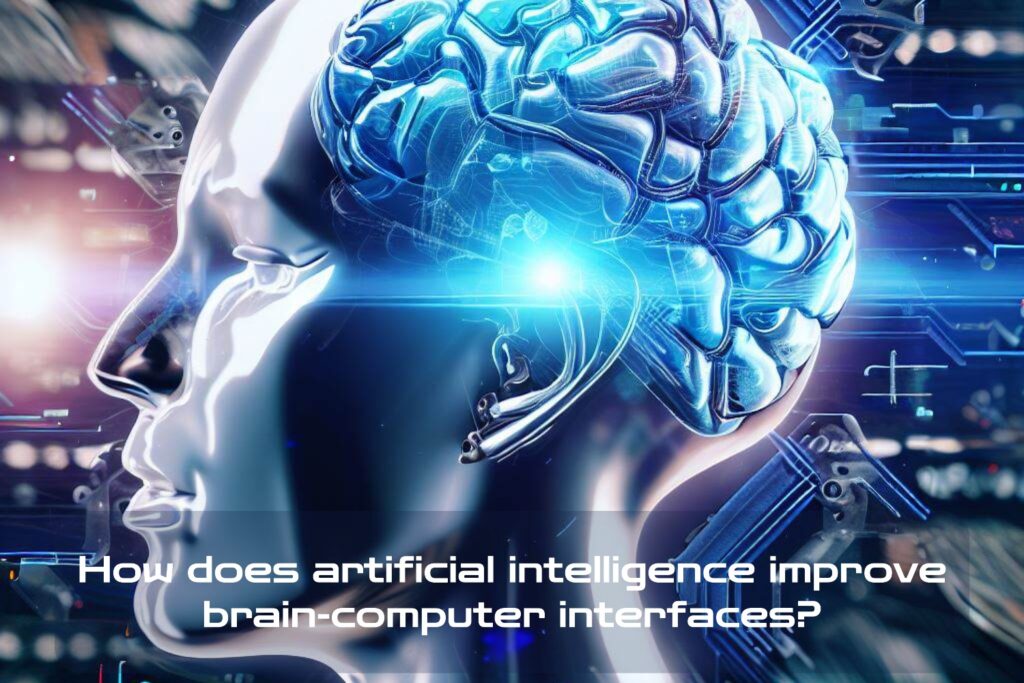The Power of AI in Brain-Computer Interfaces
What are Brain-Computer Interfaces?
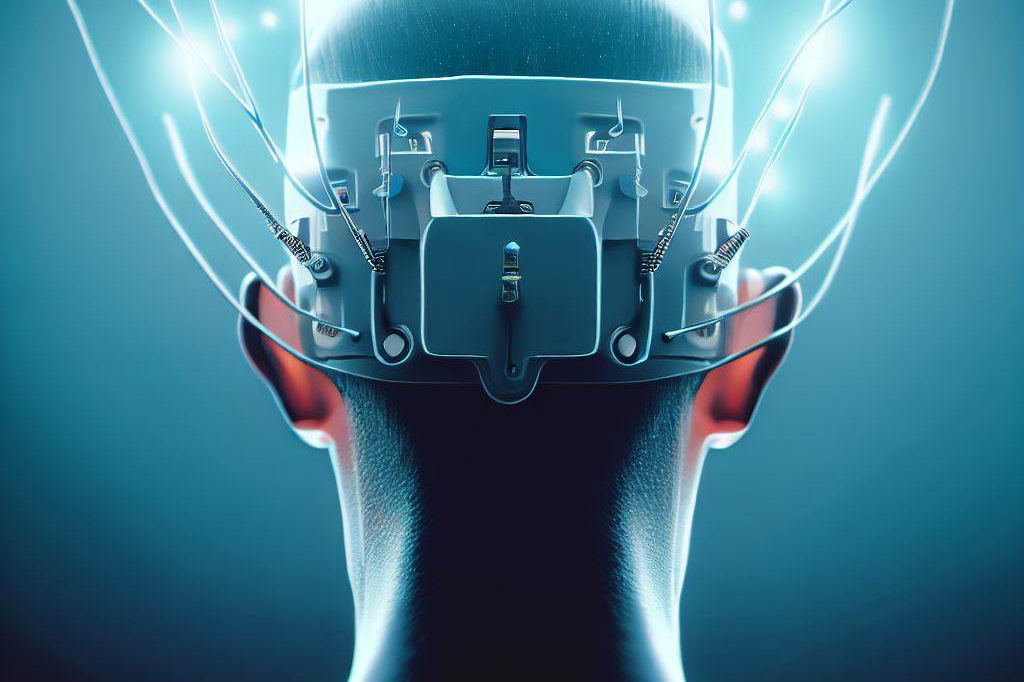
Brain-Computer Interfaces (BCIs) are fascinating technologies that allow direct communication between the brain and external devices. The concept of BCIs is not new, and it has been studied for many years.
BCIs provide an innovative way to control computers, robots, or other mechanical devices using only the power of the mind. In other words, BCIs enable people to interact with technology without using their bodies.
BCIs typically consist of three parts:
- sensors that record brain signals,
- signal processing algorithms that interpret brain activity and extract meaningful information,
- and a device or a system that responds to these signals in some way.
The goal behind BCIs is to create a seamless interaction between the brain and technology so that people can use their thoughts or intentions to perform specific tasks.
The Importance of AI in Improving BCIs
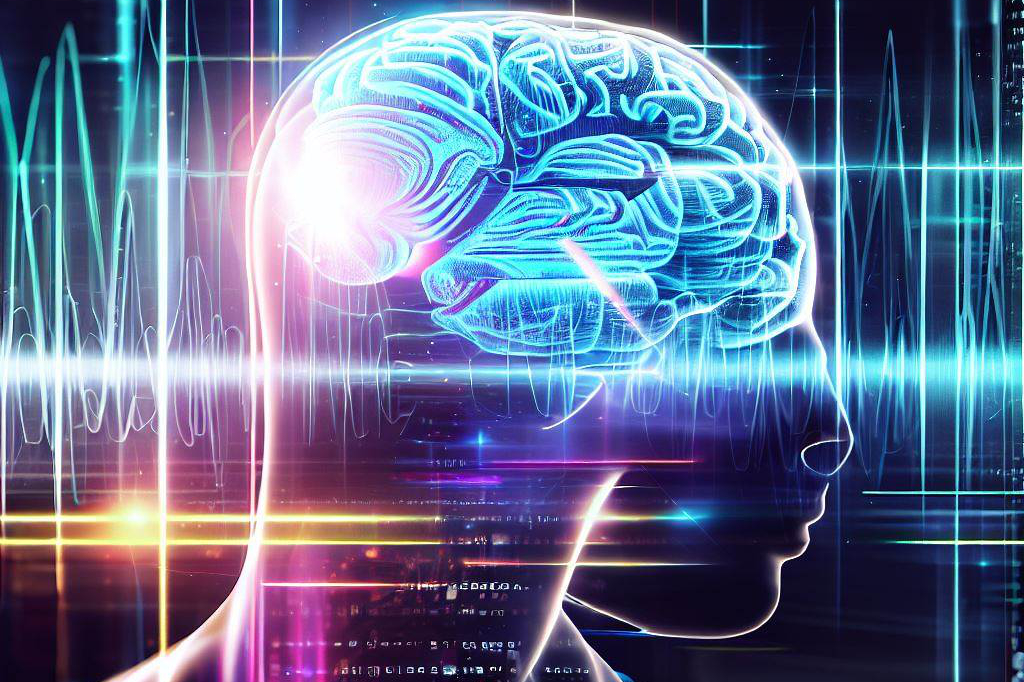
While the idea behind BCIs sounds amazing, creating a reliable BCI system is still challenging due to the complexity of interpreting human brain signals accurately and consistently. This is where Artificial Intelligence (AI) comes into play. AI offers advanced techniques for signal processing, feature extraction, and machine learning algorithms that can help improve the accuracy and reliability of BCIs.
AI can also assist with real-time data analysis by quickly detecting patterns in large volumes of data collected from different sensors. Moreover, AI technologies such as deep learning have been shown to significantly enhance BCI performance by enabling more accurate decoding of neural activity patterns.
Deep learning algorithms can identify complex spatial-temporal patterns across multiple electrodes simultaneously instead of relying on single-feature extraction methods traditionally used in BCI systems. AI has emerged as a powerful tool for advancing BCI research by improving both the accuracy and efficiency of the signal processing chain while creating new opportunities for developing more complex applications for individuals with disabilities or other medical needs.
AI in BCI Signal Processing: Enhancing Interpretation
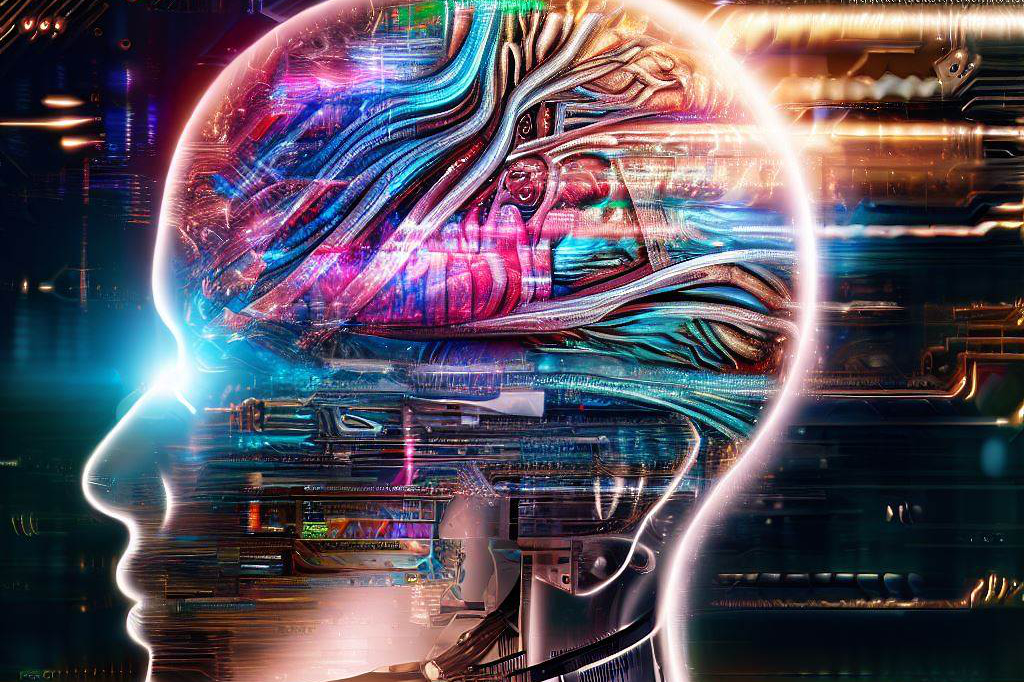
One of the biggest challenges in using brain-computer interfaces (BCIs) is accurately interpreting neural signals. This is where artificial intelligence (AI) can play a crucial role.
AI algorithms can help enhance the interpretation of neural signals by identifying patterns and trends that are difficult for humans to detect. AI-assisted signal processing techniques have been developed to improve signal quality, reduce noise, and increase accuracy.
For example, independent component analysis (ICA) is an AI algorithm that can separate complex signals into their individual components. This technique has been used successfully to remove unwanted background noise from EEG signals, making them easier to interpret.
Other AI algorithms, such as machine learning and deep learning, have also shown promise in enhancing signal processing and interpretation for BCIs. These sophisticated techniques allow computers to learn from large datasets of brain activity and identify meaningful patterns that humans might miss.
Examples of AI-Assisted Signal Processing Techniques
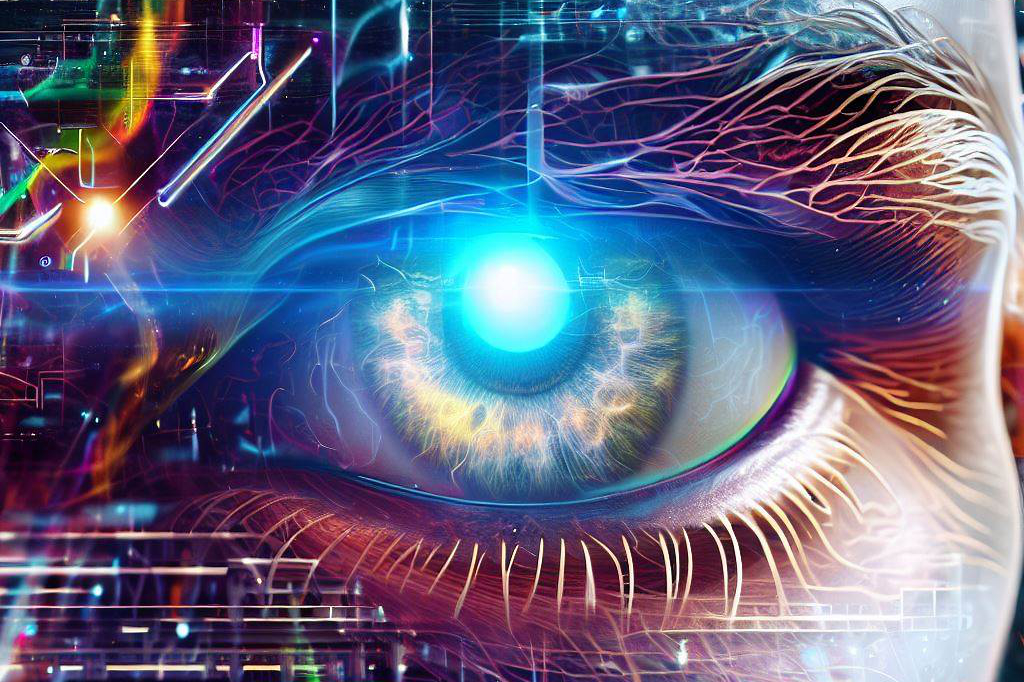
There are several examples of successful applications of AI-assisted signal processing techniques in BCIs. One example is the use of adaptive filtering algorithms to remove eye movement artifacts from EEG signals.
Eye movements can interfere with the detection of specific brain waves, but this technique has been effective in removing them without losing important information. Another example is the use of support vector machines (SVMs) for classification tasks within BCIs.
SVMs are machine learning algorithms that can classify data into different categories based on features extracted from the data. In one study, SVMs were used to classify motor imagery tasks with up to 90% accuracy.
Overall, AI algorithms have tremendous potential for improving signal processing and interpretation within BCIs. With further research and development, these technologies could revolutionize how we interact with computers using our brains alone.
AI in BCI feature extraction – an explanation
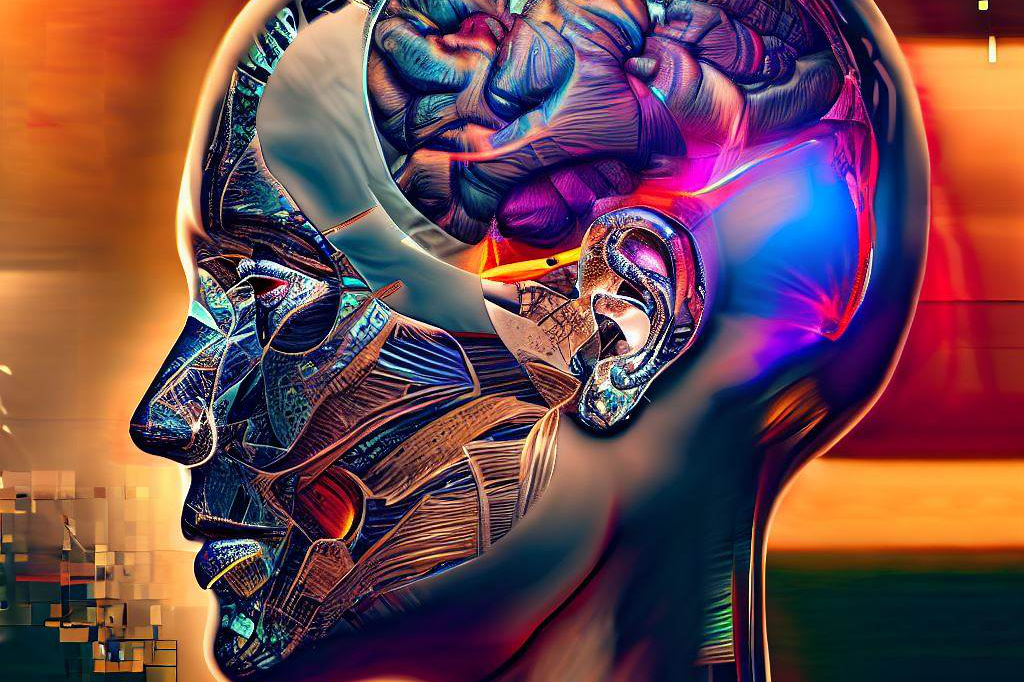
In BCIs, feature extraction refers to the process of identifying and isolating relevant signals from the raw data collected by the BCI device. The goal is to extract key features that are related to specific mental or motor tasks, such as imagining moving a limb or solving a math problem.
Feature extraction is essential for the accurate classification of signals and efficient communication between the user’s brain and the computer. However, it can be a difficult and time-consuming task due to the high variability in signal patterns across individuals and sessions. How AI can improve feature extraction accuracy and efficiency
AI algorithms have shown promising results in improving the accuracy and efficiency of BCI feature extraction. By analyzing large amounts of data, AI can identify complex patterns that may not be detectable by humans alone. This leads to more accurate identification of relevant signal features, reducing errors in classification.
Moreover, AI can adapt its algorithms over time based on feedback from users, further improving accuracy. On top of that, AI-assisted feature extraction can significantly reduce processing time compared to traditional methods. Case studies on the use of AI in feature extraction
There have been several case studies demonstrating the benefits of using AI in BCI feature extraction. One study used deep learning algorithms to extract useful features from EEG signals related to finger movements with high accuracy (over 97%).
Another study used support vector machines (SVMs) combined with genetic algorithms to optimize feature selection for an auditory-based BCI system. Overall, these studies suggest that AI-assisted feature extraction holds great promise for improving signal classification accuracy and communication speed in BCIs.
AI in BCI Control Systems

BCI control systems play a crucial role in enabling users to interact with technology using their thoughts. These systems analyze the signals generated by the brain and translate them into commands that can be used to control a device such as a computer or prosthetic limb.
However, traditional control systems can be prone to errors and may not always accurately interpret a user’s intentions. AI-assisted control systems have the potential to overcome these limitations and provide fast and accurate control of devices.
Overview of BCI Control Systems
BCI control systems typically consist of three main components: signal acquisition, signal processing, and command generation. The first component involves acquiring signals from the brain through electrodes placed on the scalp or implanted directly into the brain tissue.
The second component processes these signals to extract relevant features that can be used to generate commands. The command generation component translates these features into device-specific commands such as moving a cursor on a screen or controlling an artificial limb.
How AI Can Improve Accuracy and Speed of Control Systems
AI algorithms have been shown to improve the accuracy and speed of BCI control systems by reducing noise in signal acquisition, enhancing feature extraction, and improving command generation accuracy. For example, machine learning algorithms can be trained on large datasets of neural activity to identify patterns that could indicate specific intentions or actions.
These algorithms can then be incorporated into real-time BCI control systems for improved accuracy. One way AI has improved BCI accuracy is through deep learning techniques such as convolutional neural networks (CNN).
CNNs are particularly useful for analyzing time-series data such as EEG signals because they can capture both spatial and temporal relationships within the data. This allows for more accurate feature extraction which ultimately leads to better performance in BCI applications.
Examples of Successful Applications of AI-Assisted Control Systems
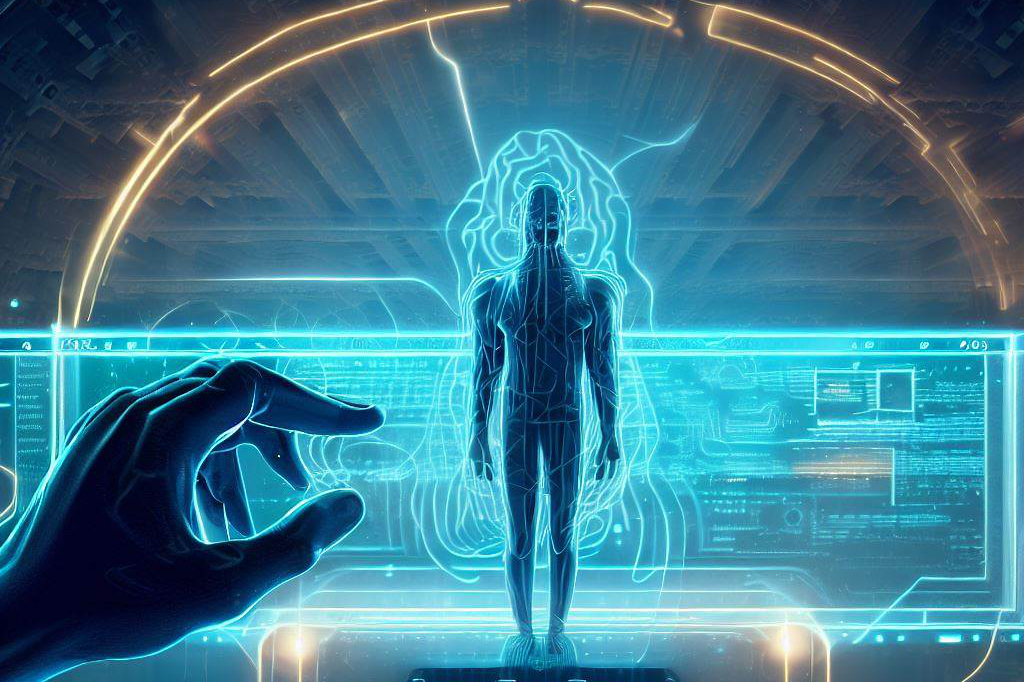
One notable example of an AI-assisted BCI control system is the BrainGate system. This system consists of a small implantable device that records neural activity from the motor cortex and translates it into cursor movements on a computer screen.
The BrainGate system uses machine learning algorithms to improve cursor control accuracy over time, allowing users to type at speeds of up to 40 words per minute. Another example is the myoelectric control of prosthetic limbs.
Myoelectric control involves using signals generated by muscle contractions to control artificial limbs. AI-assisted myoelectric control systems have been shown to significantly improve the accuracy and speed of limb movement, allowing users to perform complex tasks such as grasping and manipulation with greater ease.
AI-assisted BCI control systems have the potential to significantly improve the user experience and performance in a variety of applications. By reducing errors and enhancing accuracy, these systems open up new possibilities for individuals with disabilities and other medical conditions that limit their ability to interact with technology using traditional means.
Challenges and Limitations
The Challenge of Interpreting Brain Signals
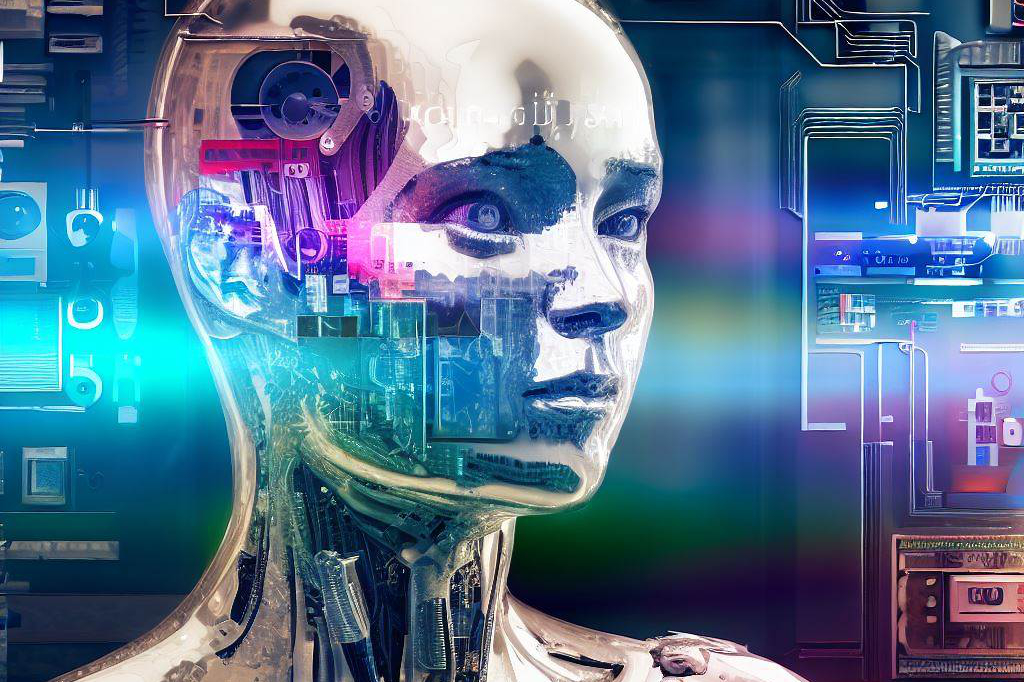
One of the biggest challenges in integrating AI into BCIs is the ability to accurately interpret brain signals. While advancements in AI algorithms have greatly improved signal processing, there are still limitations in understanding the complexity and variability of human brain activity.
In addition, different individuals may have vastly different brain patterns, which further complicates the interpretation process. This means that AI models must be highly adaptive, capable of learning and adjusting to individual users over time.
Ensuring Privacy and Security
Another potential limitation of AI-assisted BCIs is the issue of privacy and security. Since BCIs rely on collecting sensitive personal data, such as brain activity, it’s important to ensure that this information is kept safe from potential cyberattacks or data breaches. Additionally, there may be concerns about who has access to this information and how it is being used – particularly when it comes to medical applications where patient confidentiality is critical.
Potential Solutions
Despite these challenges, there are a number of potential solutions that could help overcome these limitations. For example, researchers could work on developing new signal processing techniques that are specifically designed for AI integration – such as using deep learning algorithms to better understand complex neural patterns. Additionally, researchers can explore ways to improve BCI device security through encryption techniques or by implementing stricter user access controls.
Ultimately, while there are certainly obstacles facing the integration of AI into BCIs, continued advancements in technology and innovation suggest that these challenges can be overcome with time and dedication. By working together across disciplines such as neuroscience, computer science, engineering, and medicine – we can continue pushing towards a future where individuals with disabilities have greater autonomy through advanced BCI devices empowered by cutting-edge AI technology.
Future Implications and Possibilities
The potential impact of AI on the BCI field
The integration of AI in BCIs has already brought about significant improvements in terms of signal processing, feature extraction, and control systems. However, this is just the beginning. As AI technology continues to evolve and improve, it could revolutionize the way we interact with brain-computer interfaces.
One possibility is that AI-enhanced BCIs could provide a new level of independence for individuals with disabilities. For example, people with paralysis could use a BCI to control prosthetic limbs or communicate more effectively through speech-generating devices.
The use of AI algorithms would enhance the accuracy and speed of these systems, making them more accessible and efficient. Another area where AI-powered BCIs could have a significant impact is in healthcare.
Medical professionals could use these systems to diagnose neurological conditions more accurately or monitor patients’ brain activity during surgery or other medical treatments. Researchers may also be able to gather valuable insights into cognitive processes that were previously impossible to measure.
Challenges and Ethical Considerations
As exciting as these possibilities are, there are also challenges that must be addressed. One concern is ensuring that these technologies remain accessible and affordable for all individuals who may benefit from them. Additionally, there are ethical considerations surrounding data privacy and security when working with sensitive brain data.
Another challenge is the potential for unintended consequences as we continue to integrate technology into our bodies in new ways. It will be important for researchers and developers to carefully consider the implications of their work and work towards mitigating any negative impacts.
The Future Is Now
Despite these challenges, it’s clear that the future of BCIs lies in continued integration with AI technology. As we see advancements in hardware design coupled with increasingly sophisticated machine learning algorithms, we can expect even greater improvements in the accuracy, speed, and accessibility of these systems.
Overall, the potential benefits of AI-enhanced BCIs are enormous. From providing greater independence to individuals with disabilities to revolutionizing healthcare and unlocking new insights into cognitive processes, the future is bright for brain-computer interfaces.
Final Thoughts…
It is evident that artificial intelligence has the potential to revolutionize brain-computer interfaces. Through its ability to enhance signal processing, feature extraction, and control system accuracy and efficiency, AI can provide significant benefits for individuals with disabilities, medical professionals, and researchers alike. By using AI-assisted BCIs, we can unlock new potentials for human-machine interaction that was previously not possible.
The accuracy and speed of these systems can be dramatically improved by using AI techniques such as deep learning algorithms and neural networks. Additionally, we can gain valuable insights into the workings of the human brain by analyzing BCI signals in conjunction with AI techniques.
Despite its benefits, there remain challenges to be addressed before fully realizing the potential of AI in BCIs. These include issues with data privacy and ethical considerations surrounding the use of advanced technologies in invasive medical procedures.
However, ongoing research and development are being conducted to address these concerns. As technology continues to evolve at a rapid pace, it is exciting to think about what lies ahead for brain-computer interfaces.
With continued investment in research and development, we could see a future where BCIs are widely used in medical treatments or even become a standard feature in everyday life. The possibilities are vast, but one thing is certain–artificial intelligence will play an increasingly significant role in shaping this future.
FAQs
1. What are Brain-Computer Interfaces (BCIs)?
– Brain-Computer Interfaces (BCIs) are technologies that enable direct communication between the brain and external devices, allowing people to interact with technology using only their thoughts or intentions.
2. How do BCIs work?
– BCIs consist of sensors that record brain signals, signal processing algorithms that interpret brain activity, and a device or system that responds to these signals. They enable the seamless interaction between the brain and technology for performing specific tasks.
3. How does Artificial Intelligence (AI) improve BCIs?
– AI offers advanced techniques for signal processing, feature extraction, and machine learning algorithms that enhance the accuracy and reliability of BCIs. AI can analyze large volumes of data, detect patterns, and improve the decoding of neural activity patterns, leading to better BCI performance.
4. What role does AI play in BCI signal processing?
– AI algorithms assist in interpreting neural signals by identifying complex patterns and trends that may be difficult for humans to detect. Techniques like independent component analysis (ICA) and machine learning algorithms can improve signal quality, reduce noise, and increase accuracy in signal interpretation.
5. How does AI enhance feature extraction in BCIs?
– AI algorithms analyze large amounts of data to identify complex patterns, improving the accuracy of extracting relevant features from the raw data collected by BCIs. This reduces errors in signal classification and improves communication between the user’s brain and the computer, all while reducing processing time.
6. How can AI improve BCI control systems?
– AI algorithms enhance BCI control systems by reducing noise in signal acquisition, improving feature extraction, and enhancing command generation accuracy. Machine learning algorithms, such as convolutional neural networks (CNNs), enable accurate interpretation of neural activity patterns and improve control system performance.
7. What are some successful applications of AI in BCIs?
– Adaptive filtering algorithms have been used to remove eye movement artifacts from EEG signals, while support vector machines (SVMs) have achieved high accuracy in classifying motor imagery tasks. Additionally, the BrainGate system utilizes machine learning algorithms to improve cursor control accuracy, enabling users to type at speeds of up to 40 words per minute.
8. What challenges are faced in integrating AI into BCIs?
– The complexity and variability of human brain activity pose challenges in accurately interpreting brain signals. Privacy and security concerns regarding sensitive brain data collection and usage also need to be addressed.
9. How can these challenges be overcome?
– Researchers can develop new signal processing techniques specifically designed for AI integration, and improve BCI device security through encryption and access controls. Collaboration across disciplines and ongoing research and development can lead to overcoming these challenges over time.
10. What is the future potential of AI-enhanced BCIs?
– AI-enhanced BCIs have the potential to provide greater independence for individuals with disabilities, revolutionize healthcare by improving diagnosis and monitoring, and unlock new insights into cognitive processes. Continued advancements in technology and innovation will drive further improvements in the accuracy, speed, and accessibility of BCIs.
TL;DR…
– 💡 Brain-Computer Interfaces (BCIs) enable direct communication between the brain and external devices, allowing individuals to interact with technology using their thoughts or intentions.
– 💡 BCIs consist of sensors that record brain signals, signal processing algorithms that interpret brain activity, and a device or system that responds to these signals.
– 💡 Artificial Intelligence (AI) plays a crucial role in improving BCIs by offering advanced techniques for signal processing, feature extraction, and machine learning algorithms.
– 💡 AI algorithms can enhance the interpretation of neural signals, identify patterns difficult for humans to detect, and improve signal processing and interpretation accuracy.
– 💡 Successful applications of AI-assisted signal processing techniques include removing eye movement artefacts from EEG signals and using support vector machines (SVMs) for accurate classification.
– 💡 AI algorithms improve feature extraction accuracy and efficiency by identifying complex patterns, reducing errors in signal classification, and adapting algorithms based on user feedback.
– 💡 AI enhances BCI control systems by reducing noise, improving feature extraction, and increasing command generation accuracy.
– 💡 Examples of successful AI-assisted control systems include the BrainGate system for cursor control and myoelectric control of prosthetic limbs.
– 💡 Challenges in integrating AI into BCIs include accurately interpreting brain signals and addressing privacy and security concerns.
– 💡 Overcoming these challenges can be achieved through developing specific signal processing techniques, improving device security, and fostering collaboration across disciplines.
– 💡 The future potential of AI-enhanced BCIs includes providing greater independence for individuals with disabilities, revolutionizing healthcare, and unlocking new insights into cognitive processes. Continued advancements in technology and innovation will drive further improvements in BCIs.

C M, a seasoned editor, journalist, and consultant, is deeply fascinated by the convergence of technology, space, and the future of humanity.
With a particular interest in transhumanism, futurology, and the philosophical and ethical dimensions of these domains, C M serves as the lead contributor to TranscendSphere and SpaceSpotlight.
When not penning insightful articles on these rapidly evolving fields, C M indulges in their love for podcasts and books, proudly embracing their status as a ‘Happy Nerd Extraordinaire!’

